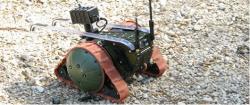
|
41 - Galileo Viper is a small robot on wheels that can turn into caterpillars. Developed since 1999 by Gallileo Mobility Instruments Ltd., Kfar Truman, Israel, for applications in farms, construction, off-road wheel chair for disabled and the Army.
http://defense-update.com/20070308_viper.html
|
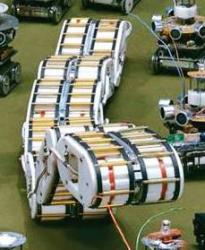
|
42 - The Millibot, Cargenie Mellon University in the early 2000s, whose many modules were automatically set together like a snake. It could thus cross large obstacles. Pict issued from Scientific American Inc., 2003 11.
|
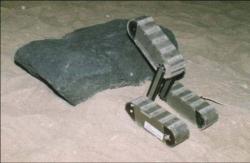
|
43 - ROSA, mini rover (1992-1994) of 1.5 kg in three parts, was investigated jointly by the Company Transmash VM, St Petersburg and the Max Plank Institute (MPIC), Munich. Picture shows well the system able to cross a wall of 300 mm, 29° slope sand, 65° slope on a carpet and a trench 300 mm wide.
|
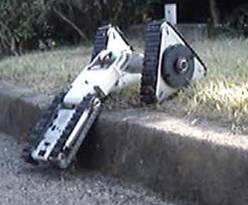
|
44 - The Advanced Industrial Science and Technology (AIST), introduced in 2007, Dir-1 inspection robot studied in fact by the Field Robotic Research Group. Original robot was equipped with a controlled and very efficient articulated tail.
http://staff.aist.go.jp/kamimura.a/
http://staff.aist.go.jp/kamimura.a/SNR/SNR.pdf
|
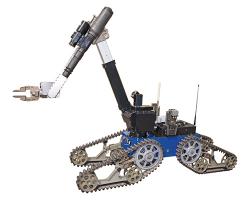
|
45 - Telemax rescue robot of Reinmetall AG, Düsseldorf, Germany, has a fully active propulsion system that allows, with its 5 kg, up 45 ° slopes and walls of 0.5 m. Designed in 2005, it is on the market since 2006. http://www.popsci.com/bown/2011/product/cobham-telemax-eodnb
|

|
46 - The Chaos (photo) of Autonomous Solutions, West Petersboro, Utah, looks like Telemax or the "KOHGA2" from Fumitoshi Matsuno, University of Electro-Communications, Japan. The Shape-Shifting Tracked Robotic Vehicle or STRV of DRDC, Defence Research and Development, Suffield, Alberta has the same configuration. http://www.autonomous
solutions.com/Chaos_High_
Mobility_Robot
|
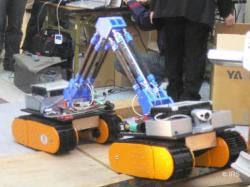
|
47 - Helios Carrier TIT, Tohoku University and Electro-Communications University, Japan, is composed of two parts. http://www.rescuesystem.org/ddt/H18-report/pdf/3-2garekijyo.pdf
http://www.rescuesystem.org/IRSweb/robot_DDT.html
|
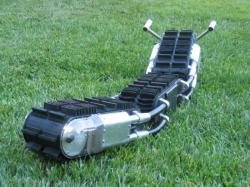
|
48 - Soryu V, developed in 2003 by Shigeo Hirose as rescue robot, is the last of the series of Soryu. This one is sealed dust and water. The tracks cover the entire active length and width of the robot. The steering lateral elastic rods avoid contact with the caterpillars.
http://www-robot.mes.titech.ac.jp/robot/snake/soryu5/soryu5.html
|
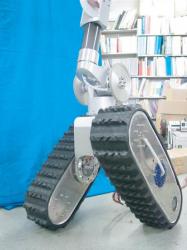
|
49 – From the same Shigeo Hirose, here is the Helios 7 robot with its treads which can be ordered all positions. http://www-robot.mes.titech.ac.jp/robot/wheeled/helios7/helios7_e.html
|
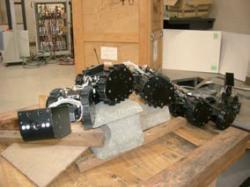
|
50 - Khoga of Matsuno Laboratories of the University of Electro-Communications, Japan, has five articulated elements that make it look like a snake. However, its mean of propulsion is not crawling but tracks. The length of Khoga combined with a small section allows it to move in very cramped places. http://www.mechatronics
.me.kyoto-u.ac.jp/modules/kenkyu/index.php?content_id=3
|
| |
|